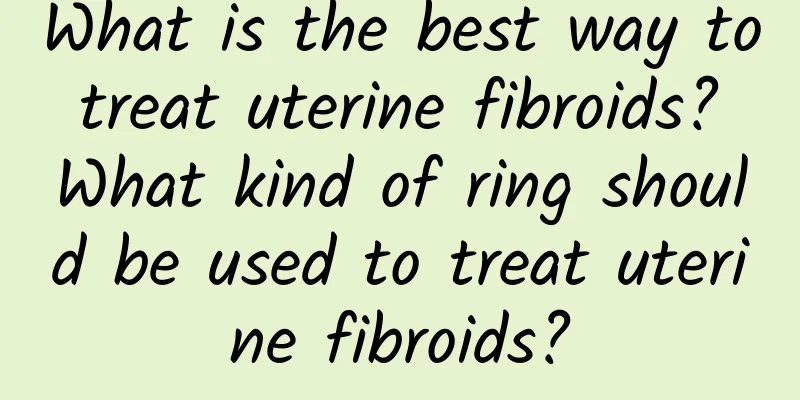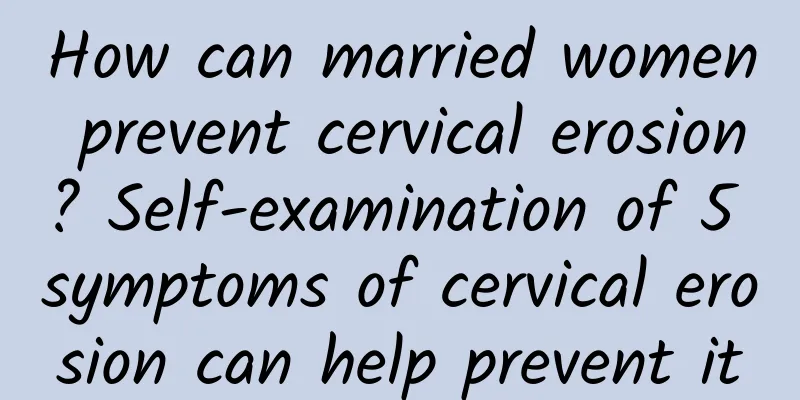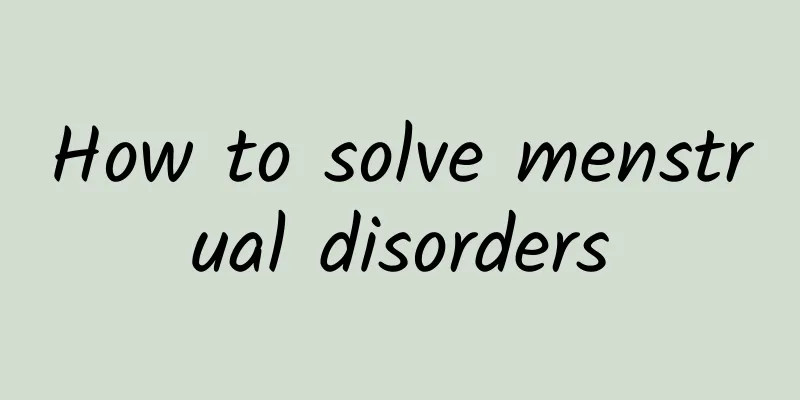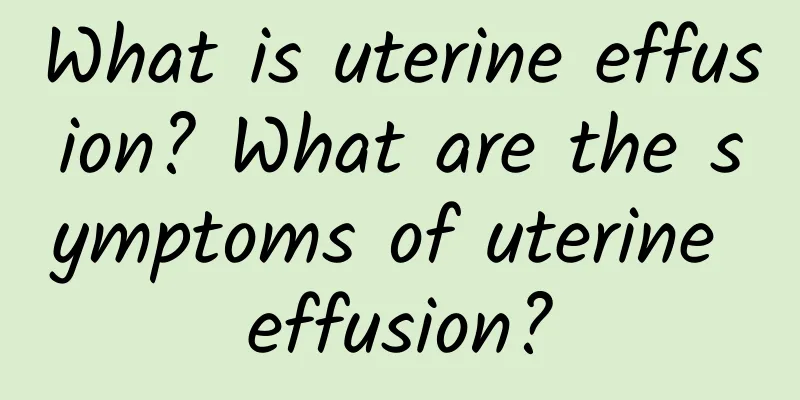What are the symptoms of uterine fibroids? What should I do if I have uterine fibroids?
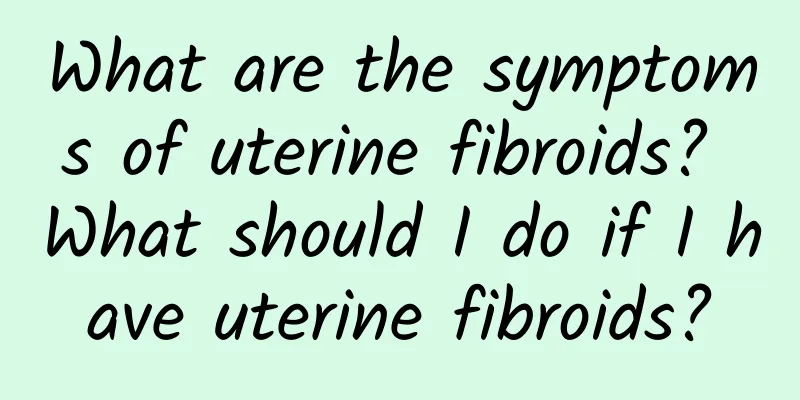
|
Uterine fibroids are common benign tumors in the female reproductive system, mostly seen in women aged 30 to 50. Their occurrence is related to excessive estrogen and long-term stimulation (such as recurrent miscarriage), and most of them can be detected early. Five manifestations suggestive of uterine fibroids (1) Menstrual changes. If your normal menstrual cycle changes, such as increased menstrual blood volume, prolonged menstrual period or irregular menstruation, you should consider this. (2) Pain. Most patients with uterine fibroids do not feel pain, but a few will experience lower abdominal pain after fibroid infection or uterine deformation. (3) Lumps. The lump may be felt in the lower abdomen, especially when the bladder is full of urine. (4) Pressure. Most patients with uterine fibroids do not feel anything. However, if the fibroid is located low, even if the tumor is not large, it can compress adjacent organs such as the bladder, causing difficulty in urination; if it compresses the rectum, defecation becomes difficult; and if it compresses the ureter, symptoms such as back pain may occur. (5) Infertility: A small number of patients with uterine fibroids may suffer from infertility because the uterus is deformed, which is not conducive to the implantation of the fertilized egg. If you find 1 or 2 of the above phenomena, you should go to the hospital as soon as possible for further diagnosis and treatment. Uterine bleeding is also a common symptom of uterine fibroids Uterine bleeding is the most common symptom of uterine fibroids. About one-third of patients may experience increased, frequent or prolonged menstruation, but irregular bleeding may also occur. There are many reasons for uterine bleeding, and usually several factors work together: 1. Due to the deformation and enlargement of the uterine cavity, the endometrial area increases, and the intramyometrial fibroids cause menorrhagia and prolonged bleeding; 2. Fibroids hinder uterine contraction or affect chronic pelvic congestion, leading to uterine bleeding; 3. Uterine fibroids combined with ovarian anovulation, endometrial hyperplasia or polyp formation, leading to menorrhagia; 4. Due to the increase of mucosal area, surface ulcers and infection, local congestion and other reasons, submucosal fibroids can cause menorrhagia, excessive frequency, spotting or irregular bleeding; 5. Chronic pelvic inflammatory disease can cause congestion and increased menstruation; 6. Irregular menstruation during menopause. What should I do if I have uterine fibroids? What should I do if I have uterine fibroids? Gynecologists say that if women have uterine fibroids, they usually pay more attention to it because it is a tumor after all and grows in the uterus, so it can cause great harm. The treatment of uterine fibroids is more valued by patients. To treat uterine fibroids, there must be certain treatment principles, and you can't rush for quick results. . Uterine fibroids can cause menstrual disorders in female patients, but the specific problem should be analyzed. Menstrual disorders are not necessarily caused by uterine fibroids. Generally, pregnancy, external pressure, weather changes, other gynecological inflammation and other factors can cause menstrual disorders, but if menstruation is irregular, there must be something wrong with the body. At this time, a systematic examination should be done to determine the cause of irregular menstruation and take necessary measures this morning. Therefore, women should pay more attention to their physical symptoms. If there is menstrual disorder, it may be caused by uterine fibroids, and it must be diagnosed in time. If diagnosed with uterine fibroids, uterine fibroids should be treated in time, and the correct method should be taken to ensure the treatment effect. What should I do if I have uterine fibroids? Experts point out that many people are concerned about how to treat uterine fibroids, because the incidence of uterine fibroids in women is still relatively high. Some women do not receive timely treatment after getting sick, which brings some adverse consequences and even malignant changes. The following are common treatments for uterine fibroids. 1. Conservative treatment. Conservative treatment is mainly for patients with less serious conditions, and is generally based on drug treatment. Conservative treatment needs to meet certain conditions, namely, the tumor is not more than 6 weeks pregnant; menopausal symptoms; non-surgical treatment can reduce perimenopausal bleeding; patients with uterine fibroids who cannot tolerate surgery can consider conservative treatment. 2. Surgical treatment. In fact, the main treatment for uterine fibroids is surgery. There are many surgical methods, including hysterectomy and uterine preservation. Patients who undergo hysterectomy generally have large fibroids, severe symptoms, ineffective conservative treatment, or malignant lesions. Uterine fibroid preservation surgery can be divided into traditional laparotomy, minimally invasive surgery, and non-invasive surgery. Compared with traditional surgery, minimally invasive surgery has the advantages of no laparotomy, less bleeding, less trauma, faster recovery, and no obvious scars. Non-invasive uterine fibroids is a minimally invasive surgery favored by women. Compared with minimally invasive treatment, it has the following advantages: no surgery, no hospitalization, non-invasive and painless, high-intensity ultrasonic knife ablation treatment of uterine fibroids. The principle is to destroy the target tissue of uterine fibroids with high temperature, change the growth environment of fibroids, and cause tumor cell death, rather than tumor removal. It can be seen that the treatments for uterine fibroids mainly include conservative treatment and surgical treatment. Now surgical treatment is the most commonly used method for treating uterine fibroids. Because there are many surgical methods, you can choose according to the patient's condition. Some surgical methods can preserve the uterus. |
<<: What should I do if I have uterine fibroids? Treatment of uterine fibroids
>>: What should I do if I have uterine fibroids? What should I eat if I have uterine fibroids?
Recommend
Double-chamber decompression painless abortion reduces your pain
What is double-chamber decompression painless abo...
What are the main causes of cervical hypertrophy?
Regarding the causes of cervical hypertrophy, man...
What to do with pelvic fluid after abortion? How should patients eat?
Some women may experience various discomforts aft...
White patches are the clinical symptoms of early vulvar leukoplakia
Atrophic vulvar leukoplakia is a common type of v...
What should women do if they have cervical erosion? Common knowledge on how to prevent cervical erosion in women
Cervical erosion is a common gynecological diseas...
What are the preventive measures for ectopic pregnancy?
Any implantation of a fertilized egg in an unexpe...
Getting rid of the hourglass figure? Experts teach weight loss secrets for different body types (Part 1)
In fact, many people who meet the standard weight...
Are the health foods that Mama Loves Group Buying really good? Is it suitable for children?
Although Donna is not a mother yet, a large group...
What is the difference between implantation bleeding and menstruation?
Of course, there are still big differences betwee...
What are the symptoms of enlarged uterine fibroids? What will happen if the uterine fibroids are enlarged?
What are the symptoms of enlarged uterine fibroid...
Understand the examination methods for cervicitis and pay attention to the correct examination channels
If you want to correctly understand cervicitis, y...
Symptoms of vaginitis
Symptoms of vaginitis: Different types of vaginit...
Detox and lose weight in spring by eating 100-calorie, high-fiber sweet potato dishes
The ancients believed that among the four seasons...
What drugs are used to treat menopause?
Every woman will face desperate situations. Women...
Losing weight after a vacation? 6 tips for a healthy vacation without gaining weight
Traveling and vacationing can make people relax a...
